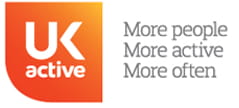In The Times newspaper on 18 February, fitness guru Matt Roberts sent shock waves through the fitness world as he announced that doing too much exercise and working too hard in the gym might be putting the health, particularly of the heart, of 40 and 50 years olds at risk. So what can we do to ensure that we stay healthy without putting a strain on our heart?
Robert’s point was that people in their 40s and 50s were increasingly training like elite athletes. Boot camps, ultra races and extreme training methods were putting the hearts of the mid lifers under strain and causing cardio problems now and in later life.
In The Times article, health and fitness journalist Peta Bee, says: ‘Forget gentle aerobics and “legs, bums and tums”, fitness counts these days only if it’s boxing, extreme Spinning or fast and furious bootcamp style circuits.”
The dangers of over-doing it
These days it is not unusual for someone who is 40+ to be working out every day, sometimes more than once. Lunchtimes, after work, before work – even as our lives get more hectic we still find the time to get our does of extreme exercise.
The problem is the long term problems this may be causing. A book recently released in America, The Haywire Heart, Dr John Mandrola, a US cardio specialists warns that “too much exercise, especially at a high and sustained rate, can damage your heart irreparably, and sometimes fatally.”
Putting the heart under stress
The theory is that long term aerobic exercise can lead to a range of heart conditions, such as arrhythmia, atrial fibrillation and coronary artery disease.
These are arguments that Roberts agrees with: “It’s fine to aim high with your fitness, but the reality is that, when you add work, home life, stress and other commitments into the mix, your body will struggle to tolerate the demands that come with high levels of training,” he is quoted as saying in The Times.
“At the very least, persistent excessive exercise can raise the risk of repetitive strain injuries, weakened immune systems and heightened susceptibility to infections. “It results in an overload that can make the process of physical development incredibly difficult and can even mean that the body’s cells start to break down,” adds Roberts. “Unlike elite athletes and some fit celebrities, the average person does not have the advantage of a support team who can help them adopt a wide variety of carefully managed recovery approaches – a great deal of rest and soft-tissue management, for example – all planned to allow their body to grow and develop in the best way.”
The solution
So what should people be doing as they enter their 40s and 50s? What is a safe level of exercise and a safe amount to activity?
30-60 minutes each day is more than enough to give you the cardiovascular and health benefits of exercise. If you are training for a one-off event, such as a marathon, then exercising harder and longer to train for that event is fine, but it is the people who are doing in excess of 60 minutes, day in, day out who are storing up health problems.
Roberts suggests mixing things up. Two weekly cardiovascular exercise sessions – running, rowing, cross-training; a circuit; two weights sessions and a yoga or pilates session is a good blend of activities that will keep you fit and supple but will not put your heart under enormous strain.
For more advice on suitable exercise programmes, talk to our knowledgeable staff in the gym.













